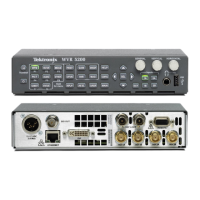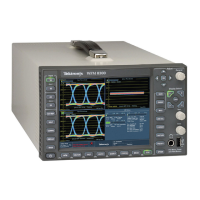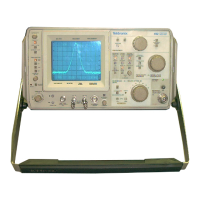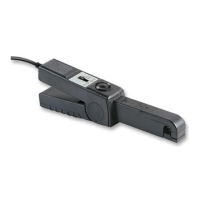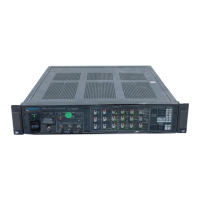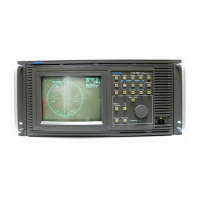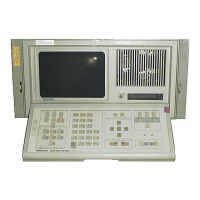Specifications
Table 31: Composite vector mode characteristics (Option CPS) (cont.)
Characteristic Performance requirement Reference information
Composite Vector Dot Reference Shows true zero subcarrier reference.
DG/DP Graticule Includes markings for measurement of
differential gain and differential phase.
VideoOptionEYE
Option EYE and PHY is available for the WVR7120 only. The following tables
list the the characteristics specifictoOptionEYEandPHY.
Table 32: Eye Diagram Display characteristics
Characteristic Performance requirement Reference information
Type
Equivalent Time Sampler.
Formats
(See page 33, Signal Input-to-Reference
Compatibility Tables.)
Signal Bandwidth
WVR7120
50 kHz to 2.0 GHz at –3 dB point.
WVR6020 50 kHz to 600 MHz at –3 dB point.
Time Base Jitter, typical
–
HD 35 ps p-p in 1 kHz HPF mode.
SD
–
80 ps p-p in 1 kHz HPF mode.
Eye Clock
Bandwidth Settings Clock bandwidth can be set to 10 Hz, 100 Hz,
1 kHz, 10 kHz, or 100 kHz High-Pass filter
(HPF).
Bandwidth Accuracy
Actual –3dB frequency within 10% of
nominal.
Jitter A ttenuation Error
Displays jitter at frequencies from selected
high-Pass filter (HPF) corner up to limit
inherent in the serial bit rate.
HD at 10 Hz HPF
Within 0.3 UI + 10% for j itter frequencies
above 5x the bandwidth selection.
Error for jitter frequencies between HPF
setting and 5x HPF setting due to loop
peaking, max of 1.5 dB.
HD at 100 Hz to 100 K Hz HPF
SD at All HPF Settings
Within 0.05 UI + 10% for jitter frequencies
above 5x the bandwidth selection.
Error for jitter frequencies between HPF
setting and 5x HPF setting due to loop
peaking, max of 1.5 dB.
Display Modes
Overlay (HD and SD) Overlays all bits to form each eye opening;
useful for observing peak jitter.
20 Eye (HD)
10 Eye (S D)
Displays eye relative to the parallel clock;
useful for observing jitter correlated to word
clock.
Scale Accuracy
18 Waveform Rasterizers Specifications and Performance Verification
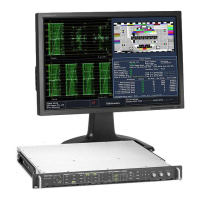
